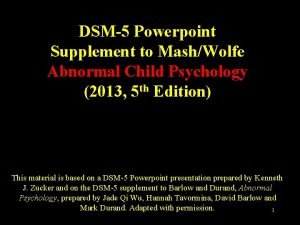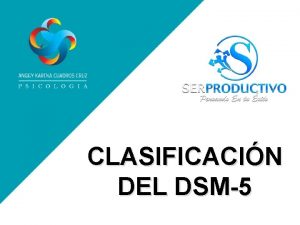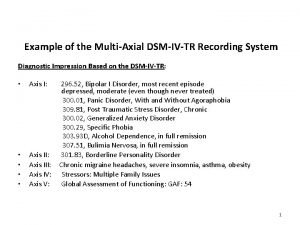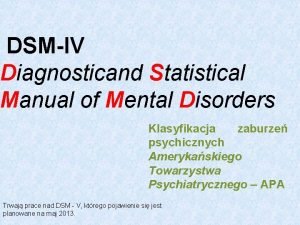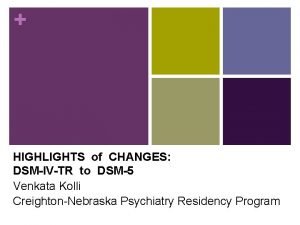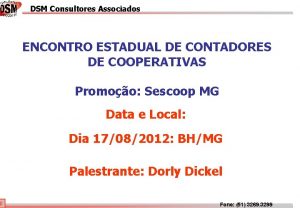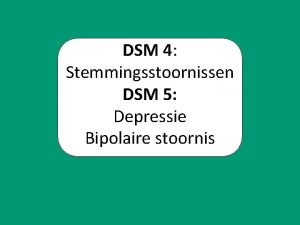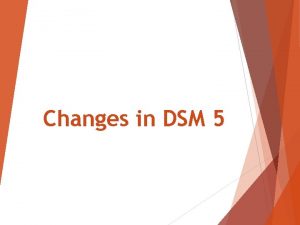7 a DSM slides Indicators of a DSM










- Slides: 10

7. a. DSM slides - Indicators of a. DSM implementation and programme management Multi-partner training package on active TB drug safety monitoring and management (a. DSM) July 2016

Learning objectives By the end of this presentation, the participant is expected to be able to… 1. Define the standard a. DSM indicators for programme management

a. DSM indicators (1) a. DSM data serve a number of purposes • • Programme indicators Causality assessment Signal detection Drug-safety profiles

a. DSM indicators (2) • The programme manager needs measures of process and outcomes, especially in the early phases of implementing a. DSM • This is besides the analyses needed for causality assessment and signal detection • Five indicators have been proposed to assess coverage and completeness of reporting, and the frequency of SAEs and confirmed ADRs

a. DSM indicators (3) summary Class Coverage Completeness Serious adverse events Indicator MDR-TB patients on BDQ included in active PV Time to stopping BDQ MDR-TB patients included in cohort event monitoring with any serious adverse event BDQ-associated adverse reactions Frequency of BDQ-associated ADRs BDQ-associated adverse reactions Time to development of BDQassociated ADRs

a. DSM indicators (4)

a. DSM indicators (5)

a. DSM indicators (6)

Table 11. 5

WHO/HTM/TB/2014. 09 This book presents the practicalities of standard and advanced analysis of programme TB surveillance data. The same approaches could have an application for in-depth analysis of a. DSM data. apps. who. int/iris/bitstream/10665/129942/1/9789241548786_eng. pdf
